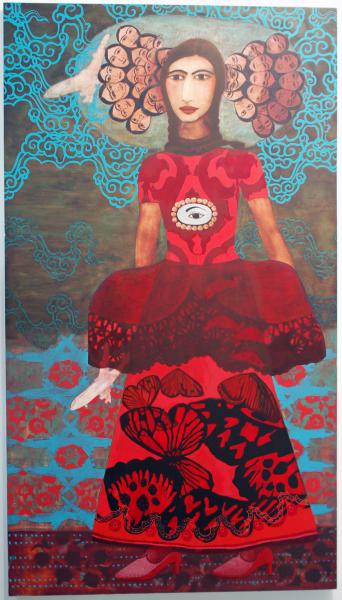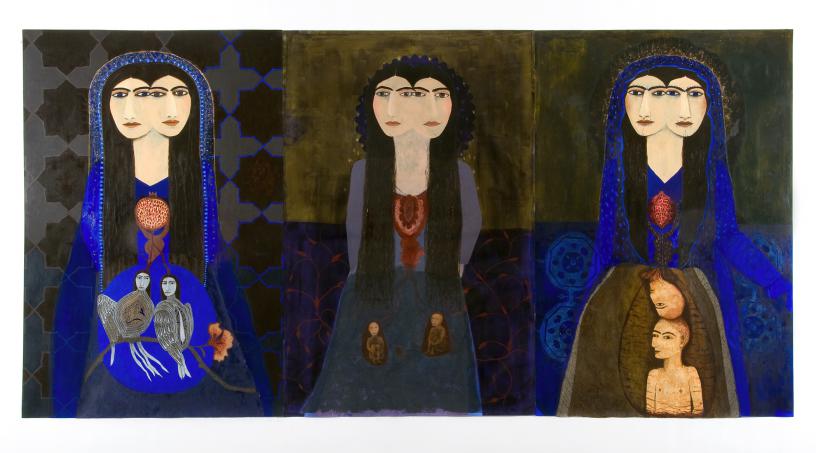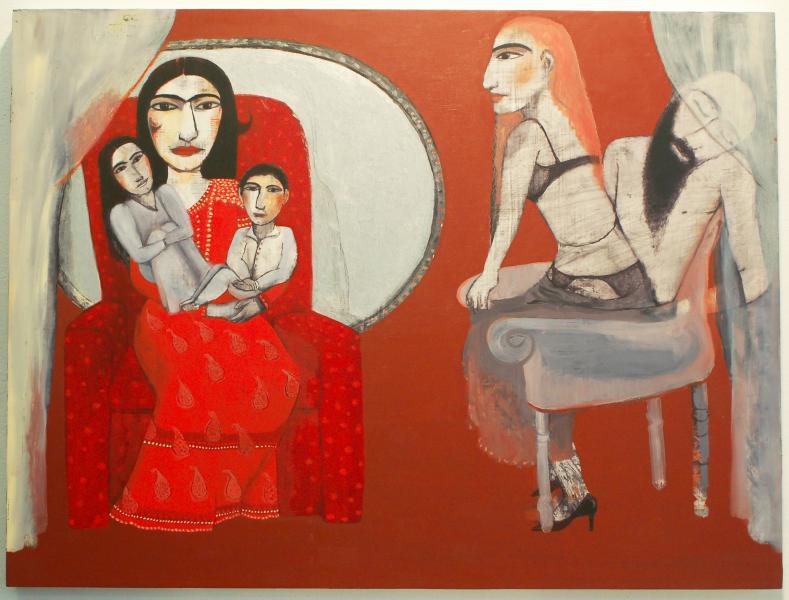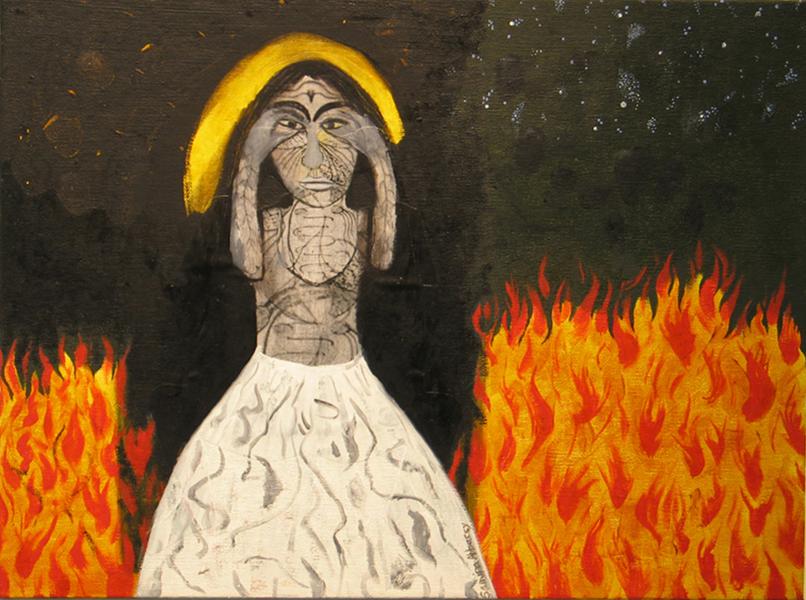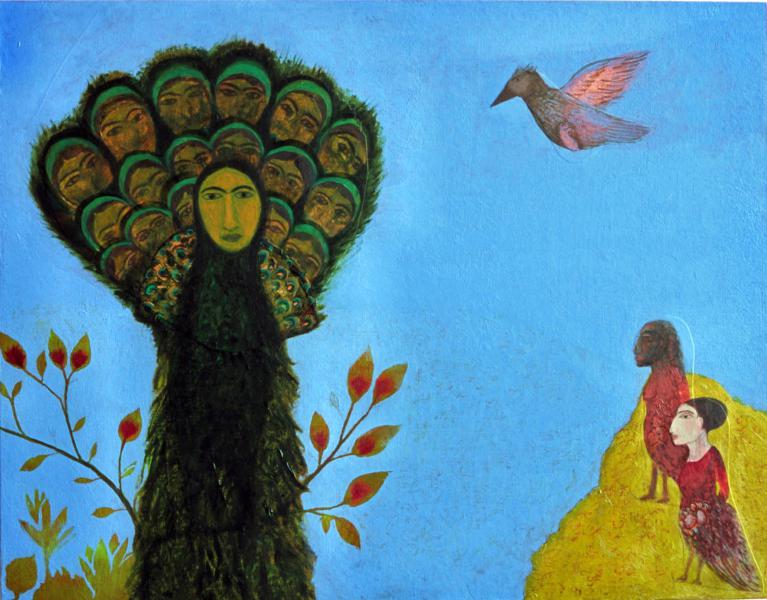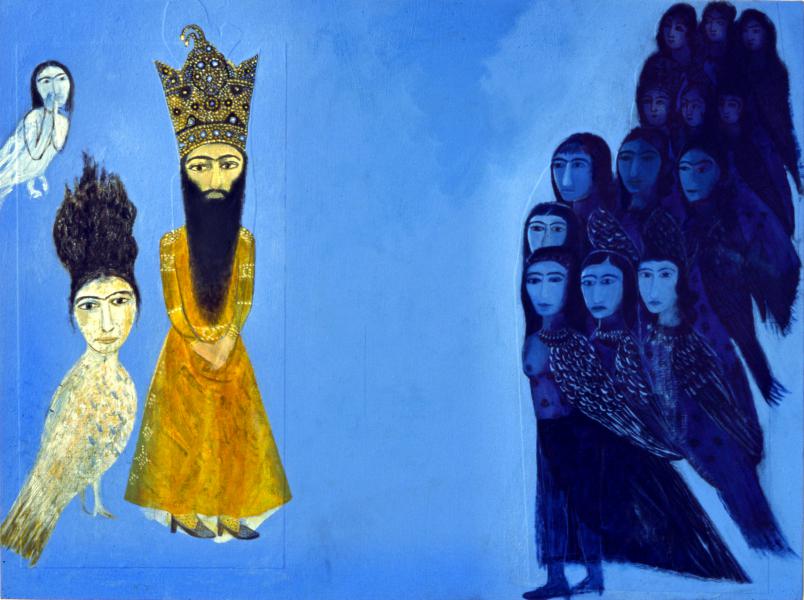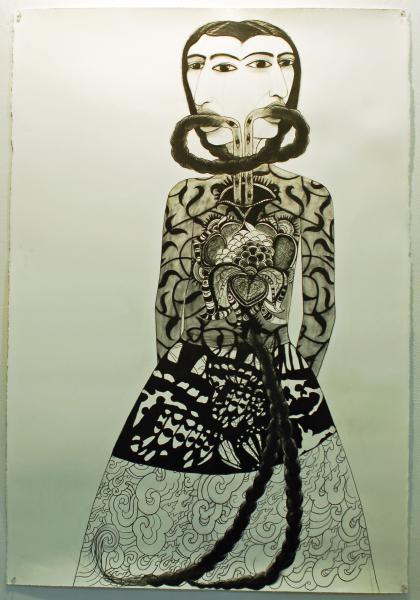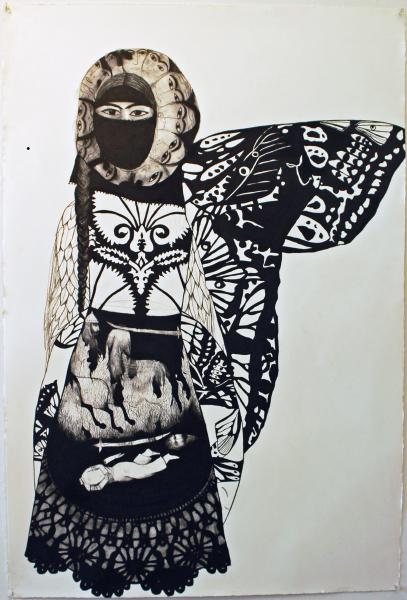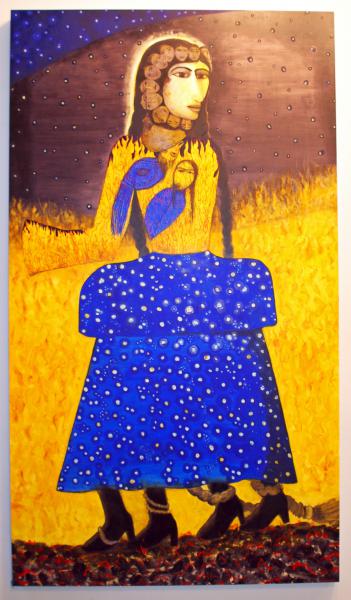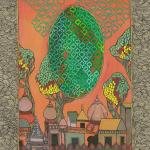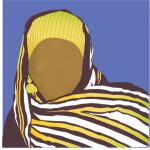Iranian artist Samira Abbassy confronts what many Muslim women face: self-definitions. Abassy needed a mirror to fully see herself, and through her artwork she says she has created a “mirror of inclusion.”
As an immigrant in predominantly white Britain, I was forced to ask: “Who am I?” “Where am I from?” I felt burdened by needing to interpret the culture of my parents without wholly understanding it. My job became the knitting together of disparate languages, conventions, and myths. I questioned many aspects of my dueling cultures; integration, belonging, and bridging gaps. My plight is typical of the diaspora experience.
I become a “fictional historian” as I reinterpreted stories about a homeland that I only saw as child. To paraphrase Salmon Rushdie, “We are creating imaginary homelands and the cultural ground beneath our feet.” It is as though I had become the ambassador of my own “never- never land” from which I was exiled.
I needed a mirror to see myself; not finding that mirror, I created my own through art. The canvas became for me “a mirror of inclusion,” a place to contextualize myself and establish my identity. Yet, in attempting to explain my relationship to “my” culture (not just Iranian, but Arab-Iranian), I found I knew little of what this culture really was. Once, I sensed only the unease of being a non-white in a white society; now I felt unease on both side of the cultural divide.
Through the discovery of pre-Renaissance Art, I found parallels in non-western art. I was especially drawn to sacred art from all faiths and denominations. I found that religious imagery in general (whether Muslim, Christian, Hindu, etc.) provides visual clues and a way into this spiritual state. The language of the sacred seemed to be better able to describe the metaphysical aspects of being human. The myths and stories presented are timeless, universal, psychic events rather than “real.”
I use self-portraiture as a way of examining and defining myself in a constantly shifting cultural context. Although seemingly autobiographical, the figures are not me, but “the archetypal self,” as in my recent series of charcoal drawings “Chemical Hysterical.” They are “the Self” from inside out; how it feels to be human. Their specific identities are woven, embroidered, and drawn into the patterns of their dresses. These are the clues that tell of who they are, what they feel, and where they come from—a biography written on a dress.
